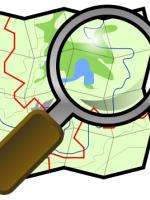
Virtual USA and Web 2.0

I’ve seen a number of intersting mapping applications being developed “on the ground” that engage citizens in a collaborative efforts to provide details about their communities. The most common of these is OpenStreetMap.org, which advertises itself as an editable map of the world.
But did you know the federal government is doing something simlar on a grand scale? It’s a participatory effort between federal, state, and local governments called “Virtual USA.” This effort, according to a Federal News Radio interview of David Boyd in the Department of Homeland Security, is an effort to integrate federal, state, local, and other information into one place to help first responders in emergencies to act more quickly.
According to a DHS fact sheet, the goal is to integrate existing data, engaging everyone, to produce a common operating picture in the event of an emergency.
Several states have successfully pioneered such a system. The most well-known is Virtual Alabama. In Alabama, officials are able to visualize on a map real-time emergency information. This information includes 3D information, building plans for public buildings such as schools, the location of video surveillence cameras, fire plugs, power lines, water mains, and the topography of watersheds to determine areas that might flood or the potential flow of an oil spill.
According to Boyd, the Department is now entering the second phase of its project, by piloting the system in eight states (Alabama, Georgia, Florida, Louisiana, Mississippi, Texas, Virginia and Tennessee).
This is an interesting experiment in Open Government, where government agencies share with each other! Virginia’s version of the project reduced response times to accidents involving hazardous materials by 70 percent, so this is more than just another Web 2.0 “toy!”
The IBM Center will be coming out with a new report shortly on evolving uses of Geographic Information Systems. So more on this later. . . .



